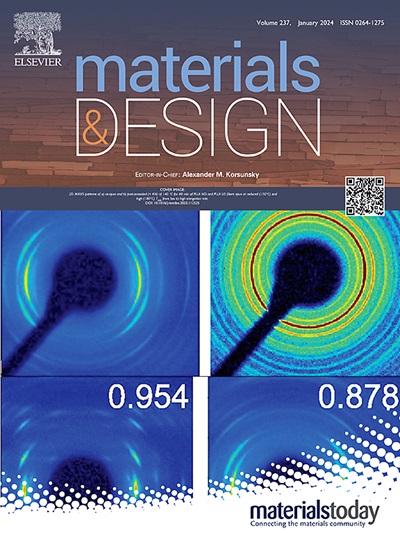Light and pH-activated nanoplatform based on oxidative stress-amplified for photodynamic and ferroptosis synergistic therapy of breast cancer
IF 7.6
2区 材料科学
Q1 MATERIALS SCIENCE, MULTIDISCIPLINARY
引用次数: 0
Abstract
Compared to traditional tumor chemotherapy, photodynamic therapy (PDT) can effectively reduce toxic side effects and prevent tumor resistance. However, the reactive oxygen species (ROS) generated by photosensitizers are limited, and the destructive effects on tumor cells are inadequate. In this study, nanomedicines loaded with the photosensitizers chlorin e6 (Ce6) and dihydroartemisinin (DHA) were constructed using human serum albumin (HSA) and transferrin (Tf), self-assembly for the programmed activation, and expansion of ROS in tumor cells. These nanomedicines, Ce6/DHA@HSA-SS-Tf nanoparticles (NPs), can target Tf receptors overexpressed on cancer cells to produce ROS through PDT with laser irradiation. Subsequently, the ROS-responsive vector is cleaved, and iron ions catalyze the released DHA to produce sufficient ROS and induce ferroptosis in tumor cells. The nanomedicine amplifies the ROS content in tumor cells through a dual response and programmed activation, which can effectively solve the problem of insufficient ROS production in tumor PDT. Consequently, the Ce6/DHA@HSA-SS-Tf NPs demonstrate excellent anti-tumor effects through the synergistic effects of PDT and ferroptosis. This treatment strategy provides a reliable basis for tumor-specific and efficient treatments.

求助全文
约1分钟内获得全文
求助全文
来源期刊

Materials & Design
Engineering-Mechanical Engineering
CiteScore
14.30
自引率
7.10%
发文量
1028
审稿时长
85 days
期刊介绍:
Materials and Design is a multi-disciplinary journal that publishes original research reports, review articles, and express communications. The journal focuses on studying the structure and properties of inorganic and organic materials, advancements in synthesis, processing, characterization, and testing, the design of materials and engineering systems, and their applications in technology. It aims to bring together various aspects of materials science, engineering, physics, and chemistry.
The journal explores themes ranging from materials to design and aims to reveal the connections between natural and artificial materials, as well as experiment and modeling. Manuscripts submitted to Materials and Design should contain elements of discovery and surprise, as they often contribute new insights into the architecture and function of matter.
 求助内容:
求助内容: 应助结果提醒方式:
应助结果提醒方式:


